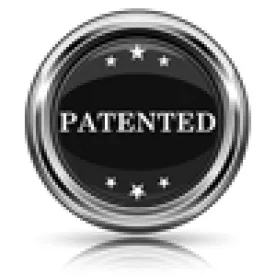Akamai Techs., Inc. v. Limelight Networks, Inc.
Following a remand from the Supreme Court, the U.S. Court of Appeals for the Federal Circuit affirmed its prior panel decision, holding that direct infringement liability of a method claim under 271 U.S.C. § 271(a) only exists when all of the steps of a claim are performed by or attributed to a single entity (including, for example, a principal-agent relationship, a contractual arrangement or a joint enterprise). Akamai Techs., Inc. v. Limelight Networks, Inc., Case Nos. 09-1372, -1380, -1416, -1417 (Fed. Cir., May, 13, 2015) (Linn, J.) (Moore, J., dissenting).
Akamai is the exclusive licensee of a patent that claims a method of delivering electronic data using a content delivery network (CDN). The patent provides that certain components of a provider’s website (e.g., large files, such as video or music files) can be designated, or tagged, to be stored on servers and accessed by internet users, which allows for increased speed of access to the content. Limelight operates a CDN and carries out several of the claimed steps, but does not tag the components to be stored on its servers. Rather, Limelight requires its customers to perform their own tagging. Limelight’s customers control their own use of Limelight’s CDN and are not contractually obligated to follow Limelight’s instructions.
At trial, the district court concluded that Limelight could not be held liable for direct infringement because Limelight itself did not perform all steps of the claimed method and because the customers performing the remaining steps of the claimed method were not under the control of Limelight. On appeal, the Federal Circuit affirmed, holding that the customers acted for their own benefit and were neither agents of Limelight nor under Limelight’s control. As a result, Limelight could not be found to have committed direct infringement. Without a single entity committing the predicate direct infringement, there could be no induced infringement under §271(b). See IP Update, Vol. 15, No. 9. Akamai successfully petitioned for a writ of certiorari at the Supreme Court.
The Supreme Court only considered the question of whether a party can be held liable for induced infringement under §271(b), even if no one had committed direct infringement under §271(a). The Supreme Court held that there can be no induced infringement based on divided direct infringement (IP Update, Vol. 17, No. 6). Since the parties did not address the question of whether Limelight had, in fact, committed direct infringement under §271(a) the Supreme Court remanded the case back to the Federal Circuit to revisit that foundational question.
On remand, the Federal Circuit affirmed its prior holding that Limelight had not committed direct infringement under §271(a) because Limelight did not itself perform all of the steps of the claimed method, nor was it vicariously liable for the activities of its customers. Citing to its prior decisions in BMC (IP Update, Vol. 10, No. 10) and Muniauction (IP Update, Vol. 11, No. 7), the Court explained that in some circumstances, a party may act as a “mastermind,” whereby they exercise sufficient “direction or control” over the actions of another, such that the actions can be attributed to the mastermind. The Court recognized that these circumstances may arise in principal-agent relationships, contractual relationships, and in joint enterprises. In such circumstances, §271(a) serves to protect patentees from a party that attempts to unfairly avoid infringement merely by contracting with another party to perform one of the steps of a claimed method. But in this case, the Court concluded that Limelight did not exercise control over its customers. Customers do not become agents merely because Limelight provides written manuals explaining how to operate Limelight’s product. Moreover, the contracts between Limelight and its customers did not obligate the customers to perform any of the method steps on behalf of Limelight. Rather, the customers were acting for their own benefit.
The Federal Circuit also considered whether §271(a) incorporates joint-tortfeasor liability and concluded that “[u]nquestionably, it does not.” Rather, the Court observed that, as legislated, the “single entity rule” applies to §271(a). Indeed, Congress specifically enacted §§271(b) and (c) to address acts involving inducing others to infringe or contributing to infringement. To apply joint tortfeasor liability to 271(a) would render these subsections redundant.
In an extensive dissent, Judge Moore articulated that the “single entity rule,” newly articulated in BMC and Muniauction, is inconsistent with the actual statute and common law and create a “gaping loophole in infringement liability.” For example, Moore notes that §271(a) attributes direct infringement to “whoever” makes, uses or sells the patented invention, which necessarily must include the collective actions of multiple persons. Indeed, Moore argues that throughout other sections of the patent act, the term “whoever” is given such collective meaning. Moreover, Moore notes that prior to enactment of the Patent Act, common law frequently ascribed liability for direct infringement of method claims to joint infringers, but did not limit application to vicarious liability.
Practice Note: Akamai has now petitioned the Federal Circuit for en banc review, seeking that the full court review its prior decisions on the subject of joint infringement liability.




 />i
/>i

